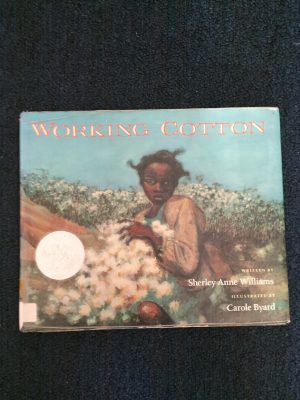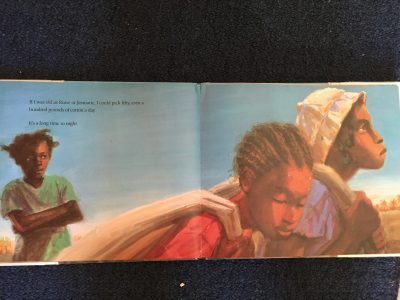

Author: Sherley Anne Williams
Illustrator: Carole Byard
Publisher: Harcourt Brace Jovanovich Publishers, 1992
Length: 28 pages
Genre: historical fiction
Analysis:
This book outlines the story of a family working in the cotton fields from before the sun comes up until after the sun goes down. It follows the day of a young girl who watches her father, mother, and siblings all picking cotton, and learning how to do it on her own, while also looking after her younger sister. The book depicts the harsh reality of these people’s lives, but ends with a note of hope and love.
At first, looking at this book’s publication date (1992), I was very skeptical about how appropriate it would be and was worried that it would portray racial stereotypes. Instead, the text represents very accurately how these families lived during this time. The text accurately demonstrates the language they used, saying things such as: “It be cold. The field fire send up a gay trail to the hazy sky. Everyone speak in smoky whispers”. While some people may argue that this way of depicting how they speak is racist, I believe it is great that the author does this because this truly is how they spoke, and it is how many people speak today. Professor Evans taught me that for some reason in America, people believe that a certain dialect is the only correct way of speaking. However, millions of people grow up speaking in this shorthand dialect, and it is important to show that it is okay to speak this way too! It is simply a different culture.
Another important aspect of the text is the way that the illustrations represent the workers. The illustrations show that they are working very hard, and that the conditions are awful. It also does not hide the fact that they are unhappy with this way of life. Despite this, it also shows the love that the family has for one another, and uses beautiful watercolors to portray these emotions.
It could be easy for this book to have been written as very racist, but the author successfully avoids this, instead accurately portraying what it was like for these families to work in such awful conditions every single day. This book is a window for children to see what this life style was like, as well as a door to provide them with the inspiration to continue speaking up for equality.
